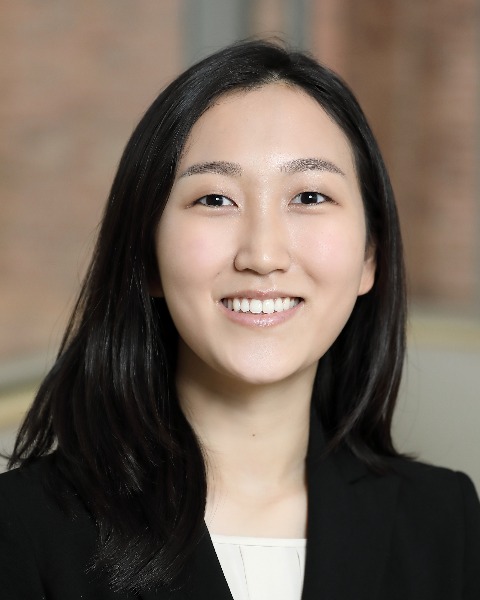Hepato-pancreato-biliary
E210: Circulating Tumor DNA in Patients Undergoing Resection of Intrahepatic Cholangiocarcinoma

Hanna Hong, BS
Medical Student
Cleveland Clinic, United States
Hanna Hong, BS
Medical Student
Cleveland Clinic, United States
Hanna Hong, BS
Medical Student
Cleveland Clinic, United States- CW
Chase J. Wehrle, MD
Resident
Cleveland Clinic
Cleveland, Ohio, United States - SF
Sami Fares, BS
Medical Student
Cleveland Clinic, United States - HS
Henry Stitzel, BS
Medical Student
Case Western Reserve School of Medicine, United States - BE
Bassam Estfan, MD
Associate Professor, Hematology/Oncology
Cleveland Clinic, United States - SK
Suneel Kamath, MD
Associate Professor, Hematology/Oncology
Cleveland Clinic, United States - SK
Smitha Krishnamurthi, MD
Associate Professor, Hematology/Oncology
Cleveland Clinic, United States - WM
Wen Wee Ma, MD
Vice Chair, Precision Oncology; Professor of Hematology/Oncology
Cleveland Clinic, United States - MK
Mazhar Khalil, MD
Staff Surgeon
Cleveland Clinic, United States - AP
Alejandro Pita, MD
Staff Surgeon
Cleveland Clinic, United States - AS
Andrea Schlegel, MD, MPH
Professor, Liver Transplantation; Lerner Research Institute
Cleveland Clinic, United States - Jk
Jaekeun kim, MD, PhD
Professor of Surgery
Cleveland Clinic, United States - KH
Koji Hashimoto, MD/PhD
Chairman, Liver Transplantation
Cleveland Clinic, United States - RW
R Matthew Walsh, MD
Chairman, Department of Surgery
Cleveland Clinic, United States - DK
David CH Kwon, MD, PhD
Section Chief, Hepato-Pancreato-Biliary Surgery, Professor of Surgery
Cleveland Clinic, United States - FA
Federico Aucejo, MD
Director, Liver Cancer Program
Cleveland Clinic, United States
ePoster Abstract Author(s)
Submitter(s)
Author(s)
Methods: Patients undergoing curative-intent resection of CCA with ctDNA testing available were identified from a prospective registry. ctDNA testing (Guardant 360) was conducted for patients pre-operatively, post-operatively, or both (sequential) from 09/2019-07/2023.
Results:
Twenty-three patients were included, most of whom underwent resection (n=17, 74%), transplant (n=3, 13%) or ablation (n=3, 13%). Median and maximum follow-up were 16 and 45 months respectively. Most patients had positive post-operative ctDNA (n=20, 87%). There was a trend toward reduced recurrence-free survival in patients with positive post-operative ctDNA (13.1 vs. 9.4 months), though this was not statistically significant (Fig. 1A). In terms of post-operative TMB, 14 (60.8%) had detectable TMB versus not detectable (n=9, 39.1%).
Fourteen (61%) patients experienced recurrence, most of whom were post-operative ctDNA+ (n=13, 93%). In patients with CCA recurrence, the dominant mutations were TP53 (31%), ARID1A (31%), and KIT (23%) versus ATM (57%) in patients did not have recurrence (Fig. 1B). Four (11%) patients had sequential testing, all of whom had positive ctDNA pre- and post-operatively (+/+) (Fig. 1C). Three patients showed partial or near complete clearance of their pre-operative mutations (#1, 3-4) whereas one patient showed no change in mutational profile with resection (#2) (Fig. 1C). One patient with sequential testing experienced CCA recurrence; despite near clearance of pre-operative mutations, acquired mutations in KRAS, ARID1A, and CDK12 were noted post-operatively (Fig. 1C).
Conclusions: The high rate of identifiable post-operative ctDNA is striking after curative intent surgery for CCA, and most patients who developed recurrence had positive post-operative ctDNA. Given the high rate of post-operative ctDNA positivity, use of individualized somatic alterations, rather than positivity vs. negativity status alone, may need to be explored for therapy-decision making and tailored treatment design. Further larger-scale studies are needed to investigate the utility of ctDNA in CCA patients.
Learning Objectives:
- Upon completion, participants will be able to assess the utility of ctDNA as a prognostic marker in recurrence free survival.
- Upon completion, participants will be able to interpret oncoprints to determine mutational changes based on recurrence status.
- Upon completion, participants will be able to analyze mutational profiles of ctDNA pre vs post-operatively.
